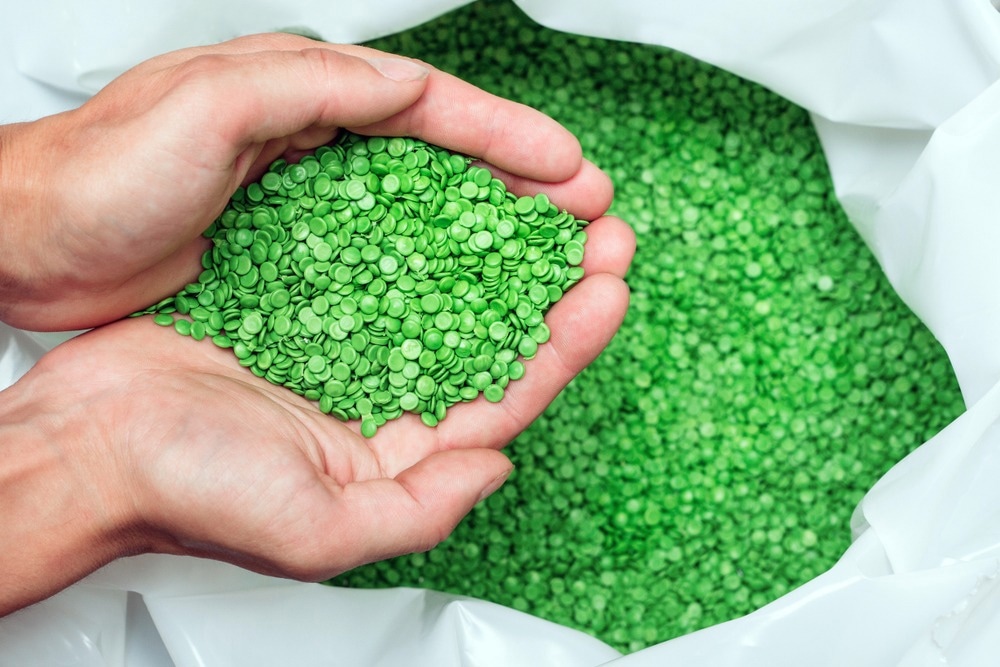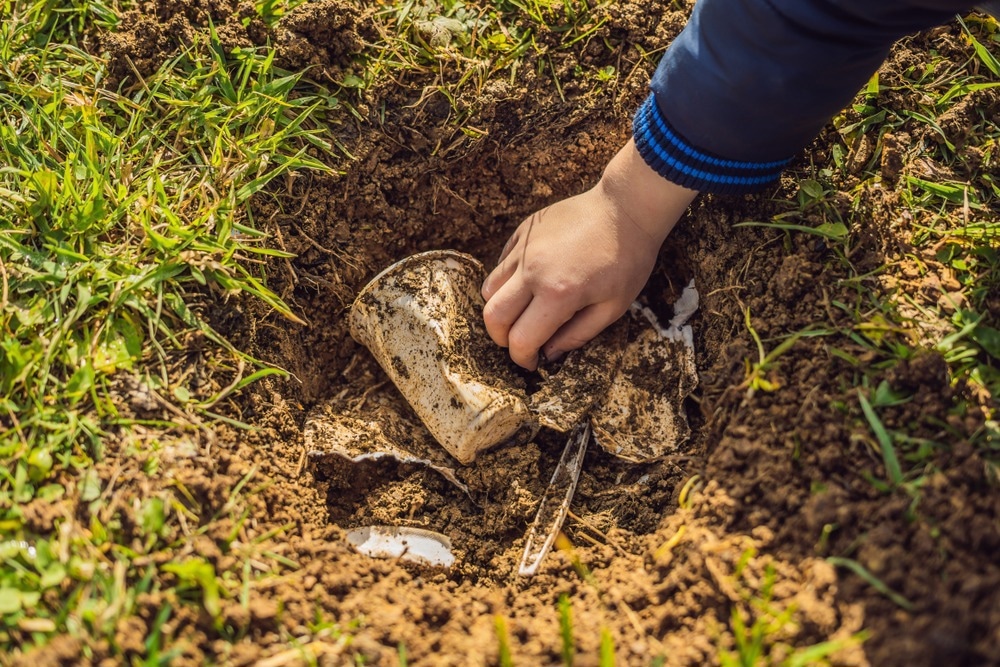Nanotechnology has revolutionized the way we think about materials and their properties. One of the most exciting developments in this field is the creation of biodegradable nanomaterials, which can break down into natural elements after a certain period. But what makes a nanomaterial biodegradable?

Image Credit: Arsenii Palivoda/Shutterstock.com
In this article, we define biodegradability and its significance, its benefits and disadvantages, standards, challenges, and outlook on biodegradable nanomaterials.
What is Biodegradable/Biodegradability and its Significance?
Before delving into the characteristics that enable biodegradability, it is important to define what biodegradability means. In the context of materials science, biodegradability refers to the ability of a material to be broken down, decomposed, and returned to the environment by natural processes, such as those carried out by microorganisms.
This contrasts with non-biodegradable materials, which persist in the environment and can negatively affect ecosystems and human health.
To label a nanomaterial as biodegradable, it is important to first identify and chemically characterize them to ascertain their possible physicochemical properties. Assessing their physical and chemical characteristics is crucial in determining their potential risks to human health and the environment.
Factors that play a significant role in determining these characteristics include the makeup, structure, molecular weight, vapor pressure, reactivity, ability to dissolve in water, boiling and melting points, and stability.
Concerning the structure, the presence of organic compounds increases biodegradability. Organic compounds can be broken down by microorganisms, leading to the degradation of the material.
Additionally, the size and shape of the nanomaterial can also play a role in its biodegradability. Smaller particles are typically more easily broken down than larger ones, and a more irregular shape can increase the surface area available for microbial attack.
Furthermore, researchers can artificially modify the structure of materials to make them biodegradable. A review paper published in Chemical Society Reviews discusses ways in which such methods are applied to nanomaterials used in 2D printing.
Here, the research team discussed the importance of understanding the biodegradability and decomposition of 2D materials, such as graphene and other emerging classes, for their safe use in new technologies and industrial sectors. The role of defects and functional groups on the surface of the materials and the consequences of chemical functionalization on biodegradability are discussed.
The concept of "degradation-by-design" is also introduced, which involves covalently modifying 2D materials to enhance their biodegradability. The importance of designing new biodegradable 2D conjugates and devices for biomedical applications is also emphasized.

Image Credit: Maples Images/Shutterstock.com
Benefits and Disadvantages of Biodegradable Nanomaterials
There are many benefits of biodegradable nanomaterials. For instance, biodegradable nanomaterials can reduce the impact of pollution on the environment and human health, as well as promote the use of sustainable materials in various industries. Additionally, biodegradable nanomaterials can help to reduce the need for landfills and other forms of waste management.
However, there are also some disadvantages to biodegradable nanomaterials. One of the main concerns is that these materials may not be able to degrade quickly enough in certain environments, leading to a build-up of debris. Additionally, the degradation of biodegradable nanomaterials can also lead to the release of potentially harmful compounds into the environment.
Standards on the Biodegradability of Nanomaterials
There are currently no universally accepted standards on the biodegradability of nanomaterials, as the biodegradability of a material can depend on a variety of factors, such as the specific type of material, its chemical functionalization, and the conditions in which it is disposed of.
However, organizations such as the American Society for Testing and Materials (ASTM) and the International Organization for Standardization (ISO) have developed guidelines and protocols for testing the biodegradability of materials in various conditions.
These guidelines typically involve assessing the material's ability to degrade under specific environmental conditions, such as in soil or water, and measuring the rate and extent of degradation. Additionally, some organizations have developed standards for biodegradable plastics, which may be used as a reference for the biodegradability of nanomaterials. Still, it is important to keep in mind that they are not specific to nanomaterials and might not always be applicable.
The ISO TC 229 has published a Technical Report outlining best practices for occupational health and safety regarding nanomaterials and nanotechnologies. This report includes recommendations for toxicology testing, risk management, exposure control, and safety data sheets.
A collaborative effort between researchers, technologists, practitioners, and regulators is necessary to ensure the safe development of nanoproducts. Different approaches, such as those established by public standards-setting bodies and private enterprises, can be considered to manage risks associated with using nanomaterials.
Future Outlook
The future outlook for biodegradable nanomaterials is promising. As research in this field continues to advance, it is likely that new and more effective biodegradable materials will be developed. Additionally, as more companies and industries become aware of the benefits of biodegradable materials, the demand for these materials is likely to increase, leading to greater investment in research and development.
Biodegradable nanomaterials have the potential to revolutionize the way we think about materials and their impact on the environment. By understanding the properties that make a material biodegradable, we can create more effective and sustainable materials that can help to protect our planet and the health of its inhabitants.
References and Further Reading
Bianco, A., Kostarelos, K., Prato, M. (2011). Making carbon nanotubes biocompatible and biodegradable. Chemical Communications 47, 10182–10188. https://doi.org/10.1039/C1CC13011K
EPA Nanotechnology (2009). Nanomaterials - Chemical Indentification and Characterization of Nanomaterials [Online]. AZoNano.com. URL https://www.azonano.com/article.aspx?ArticleID=2356
Innocenti, F.D. (2003). Biodegradability and Compostability, in: Chiellini, E., Solaro, R. (Eds.), Biodegradable Polymers and Plastics. Springer US, Boston, MA, pp. 33–45. https://doi.org/10.1007/978-1-4419-9240-6_2
Ma, B., Martín, C., Kurapati, R., Bianco, A. (2020). Degradation-by-design: how chemical functionalization enhances the biodegradability and safety of 2D materials. Chemical Society Reviews. 49, 6224–6247. https://doi.org/10.1039/C9CS00822E
Njuguna, J., Pielichowski, K., Zhu, H. (2021). Health and environmental safety of nanomaterials: polymer nanocomposites and other materials containing nanoparticles. Woodhead Publishing.
Pires, J.R.A., Souza, V.G.L., Fuciños, P., Pastrana, L., Fernando, A.L. (2022). Methodologies to Assess the Biodegradability of Bio-Based Polymers—Current Knowledge and Existing Gaps. Polymers 14, 1359. https://doi.org/10.3390/polym14071359
Disclaimer: The views expressed here are those of the author expressed in their private capacity and do not necessarily represent the views of AZoM.com Limited T/A AZoNetwork the owner and operator of this website. This disclaimer forms part of the Terms and conditions of use of this website.